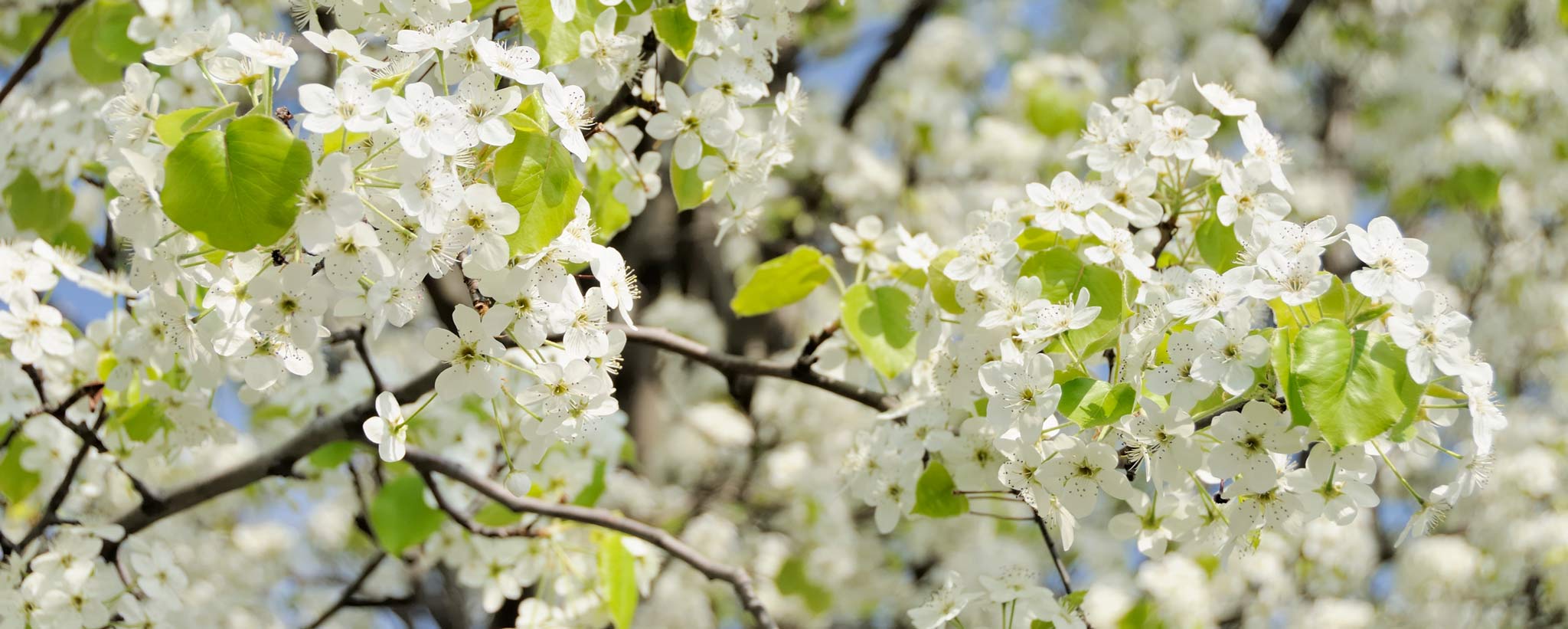Articles

Ornamental but Invasive
Whether sprouting along a fence line or filling the cracks in sidewalks, you’re sure to come across them — non-native invasive plants. Did you know that many of them were initially welcomed as ornamental garden plants?
Some of the most invasive plants in the Tennessee Valley were once cultivated or sold at plant nurseries for their disease resistance and exotic, aesthetically pleasing features. Though they can look pretty in gardens and landscaping, TVA Natural Resource Specialist Joshua Burnette and TVA Forester Randy Short says that their long-term effects on the environment are less than attractive.
“Non-native plants in their original environment had controlling factors — bugs, weather conditions or soil composition — that kept their growth and numbers in check,” says Burnette. “Outside of that natural habitat, these non-natives often leaf before local plants do, monopolize water and nutrients, and spread further and faster — shading the ground and preventing new native plant growth.”
That creates danger to the assortment of local plant life.
“It’s safe to say that any plant that has another continent listed in its name is non-native and could become invasive — like English ivy or Japanese red maples,” he continued. “When they’re planted here in the Valley’s conditions, it’s like they’re on vacation — they have no hindrances and are able to have a heyday in our local environment.”
Short noted that the Tennessee Valley is home to a wide variety of unique and sometimes even endangered plants (such as the white fringeless orchid), whose survival rates are threatened by non-native species.
“Non-native invasives, like Chinese privet, Callery pear, and multiflora rose to name a few, take over and choke out diversity,” Short says. “They’re often sought after for their beautiful flowers or vibrant colors, and it’s understandable, but many ornamental non-natives have become threats that we have to fight constantly throughout TVA lands.”
Cultivar vs. Natural
According to Short, many nurseries sell cultivars of native plants as alternatives for non-native invasives. Cultivars are plants that are chosen for specific characteristics and then cultivated to enhance those characteristics — such as rounded crowns or showy blooms. But while that sounds good, those also have invasive potential.
“The problem with cultivars of native plants is that, unless they’re sterile, which some nursery stock is, they can cross-pollinate with native species and change the DNA of the native species,” he says. “This, in turn, can affect the organisms that utilize that plant species for survival — affecting the entire ecosystem over a long period of time.”
The unpredictability of cultivars and cross pollination have also led to some non-native cultivar experiments gone wrong.
“The Bradford pear tree is a glaring example of this,” Short says. “The Bradford pear is one of many cultivars of the Callery pear, which is native to Asia. These various cultivars have been sold in nurseries and cross pollinated with each other, producing viable seed, which are scattered over the landscape by birds and other animals. There are no pear species native to the United States. So, if you observe a tree producing what appears to be miniature, domesticated pears, it is a cultivar of the non-native Callery pear. I consider the Callery pear and its various cultivars (including the Bradford pear) to be one of the most threatening and emerging invasive species currently on our landscape.”
But not all cultivar experiments have gone wrong; there have been some that were extremely valuable. When a non-native fungus was introduced to North America that decimated mature American chestnut trees in the early 1900s, botanists were able to crossbreed the American chestnut with the Chinese chestnut, which is resistant to the fungus, and strengthen the species to offer a higher level of resistance.
Here to Stay
Because most of the Valley’s invasive plants — whether introduced or cultivated — are here to stay, TVA is committed to managing the plants’ spread. Burnette, Short and the rest of the Land Assessment team assess annually the status of plant life and growth across the Valley’s 293,000 acres of public land, including invasive species populations.
“We’ll never be able to completely rid the Valley of invasive species like privet and kudzu,” Burnette says. “But the good thing is that we can and do target areas with impacting, new or excessive growth. Some require heavy-duty removal equipment or prescribed burns, and our last resort is herbicides. Goats are even being used as a natural remover for kudzu across the nation.”
Short agreed, saying some small-scale removal projects at TVA are possible with the help of local volunteers and some innovation.
“Some projects that local volunteers often help us with only require a handheld uprooter. We’ve even partnered with schools after an area has been restored to replant native trees, so there are many control methods available to help us keep the Valley’s plant life diverse and healthy. For as long as invasive species persist, so will we.”
As you’re planning your spring lawn and garden additions, TVA suggests that you consider these three questions concerning ornamentals:
1) Is it native to the geographic location it will be planted? Always try to plant native if possible.
2) If it is non-native, does it produce sterile or viable seed or is the plant known to be invasive?
3) Does it provide local ecosystem services (support caterpillars/bird food, host plant for butterflies or pollinator species, etc.)?
For opportunities in helping TVA combat non-native invasive plants, click here.
To see a list of alternative, Valley-friendly ornamental plants, click here.